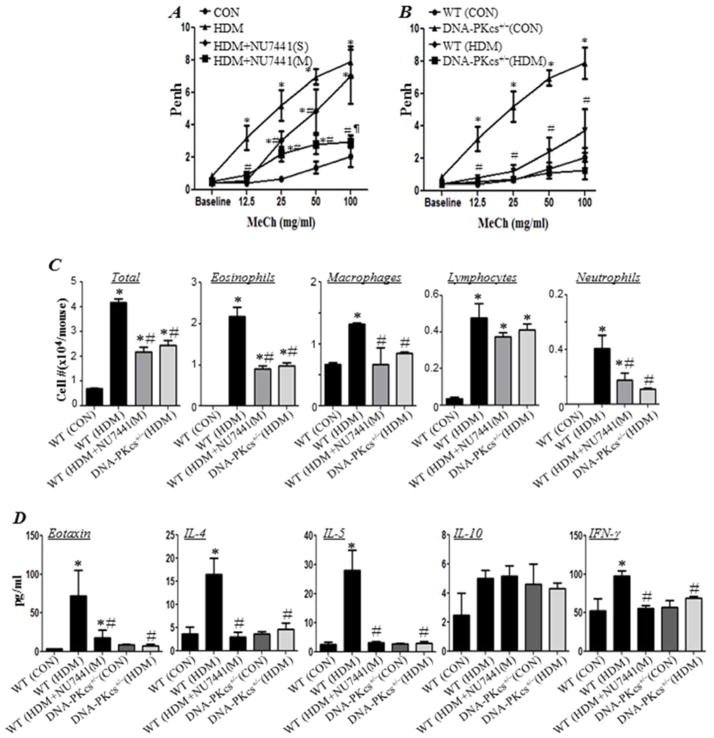Figure 5. DNA-PK inhibition pharmacologically or by gene heterozygosity blocks asthma-like manifestation in a chronic HDM asthma model.
WT or DNA-PKcs+/− mice were subjected to a chronic i.n. challenge with HDM. WT mice were administered NU7441 (5mg/kg) either 30 minutes after each HDM exposure (M) or once 30 minutes after the last HDM exposure (S). Twenty four hours after the last HDM exposure, mice were subjected to Penh measurements then sacrificed 24 h later. (A) Penh of HDM-challenged WT mice that received NU7441 with HDM exposure. (B) Penh of HDM-challenged WT or DNA-PKcs+/− mice; note the measurements for HDM-exposed and control mice are the same as those depicted in (A). Results are plotted as maximal fold increase of Penh relative to baseline and expressed as mean ± SEM where n=6 mice per group. (C) Cells of BAL fluids were differentially stained, and total, eosinophils, macrophages, lymphocytes, and neutrophils were counted. Data are expressed as total number of cells per mouse. Data are means ± SD of values from at least six mice per group. (D) BAL fluids from the different experimental groups were assessed for eotaxin, IL-4, IL-5, IL-10 and IFN-γ. *, difference from WT control mice; #, difference from WT HDM-challenged mice; ¶, difference from WT HDM-challenged mice treated with single administration of NU7441 (HDM+NU7441(S)); p <0.01.

